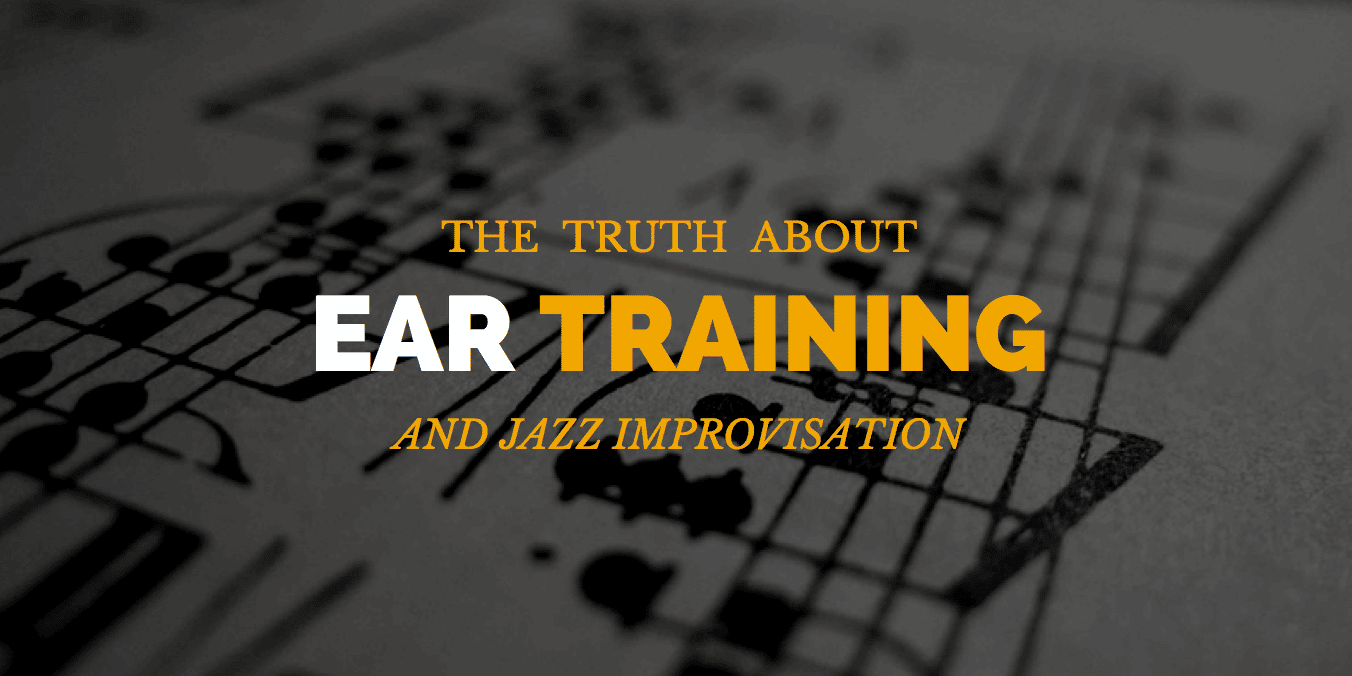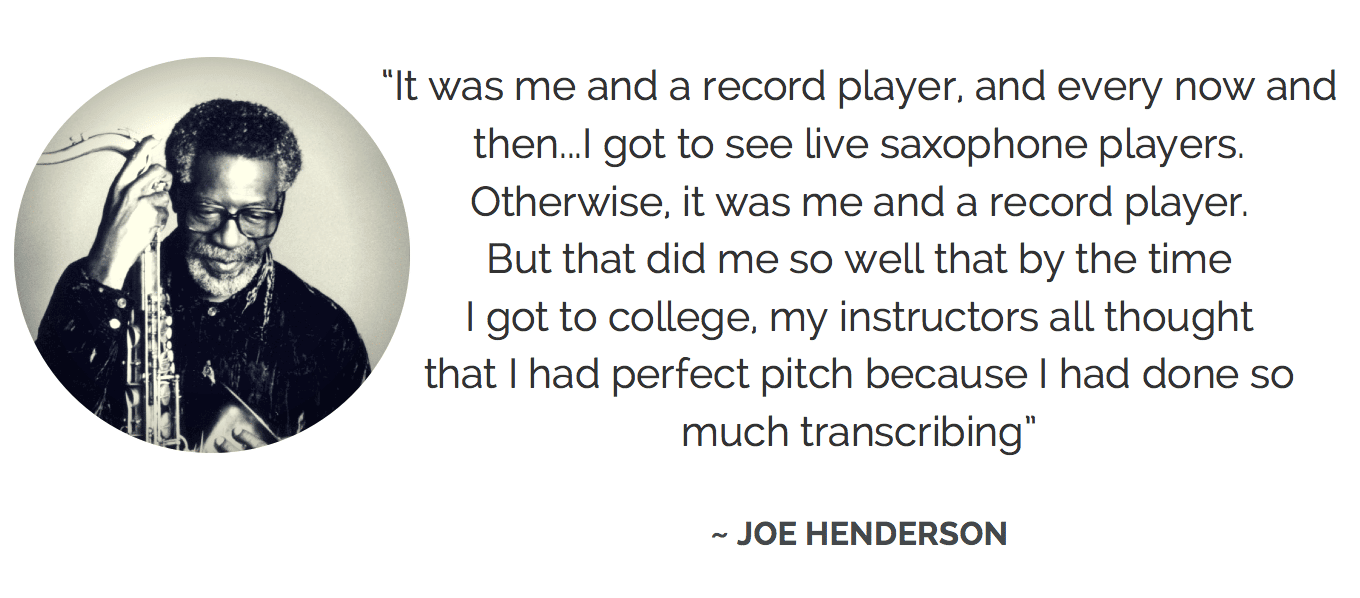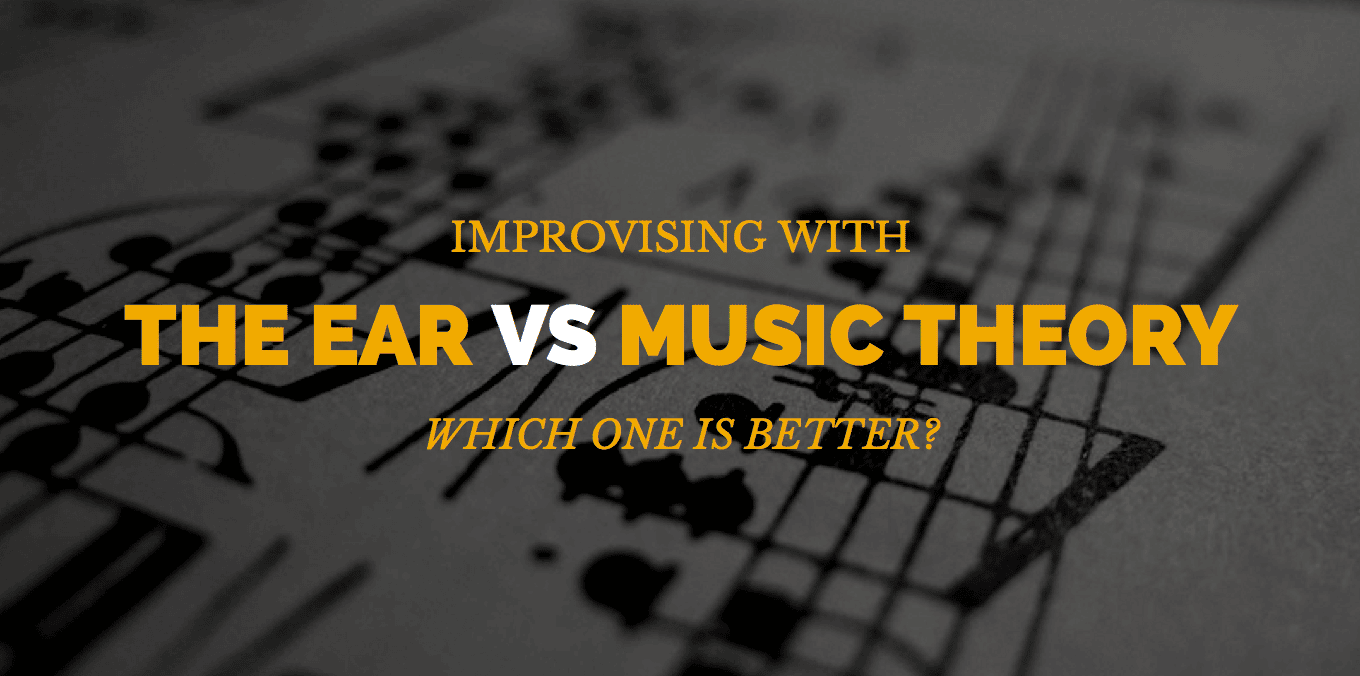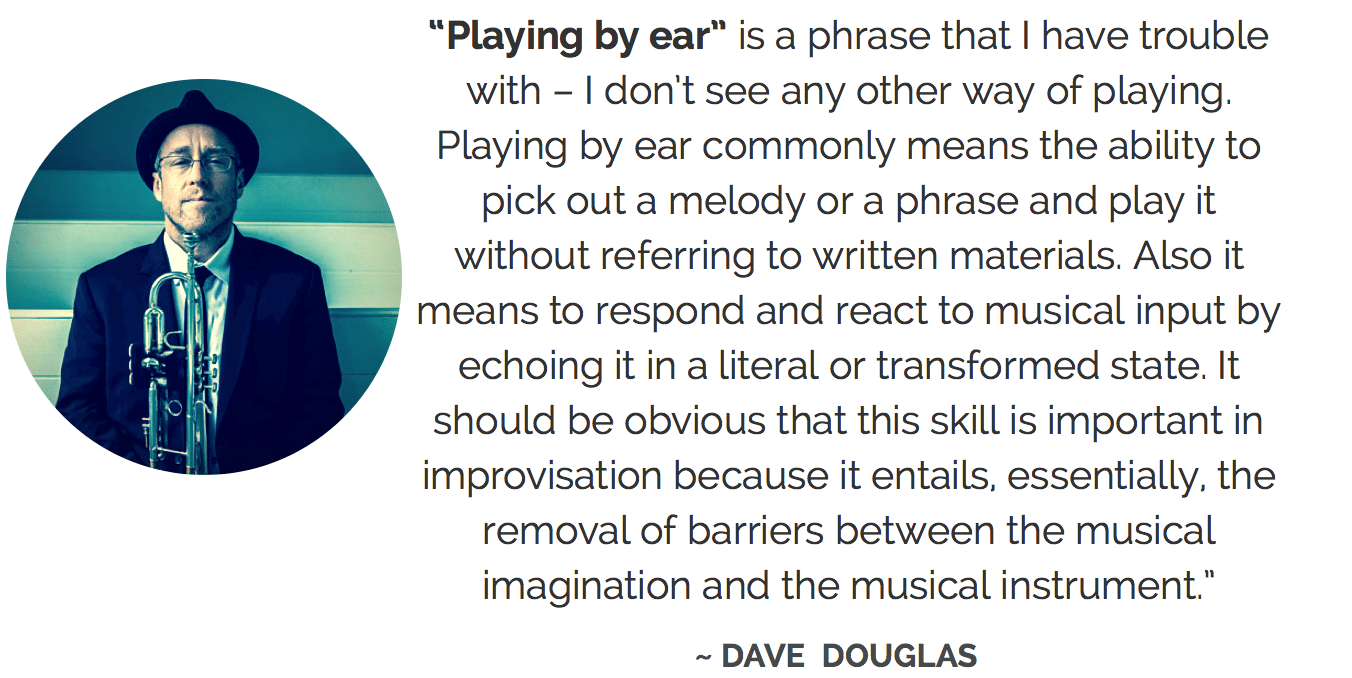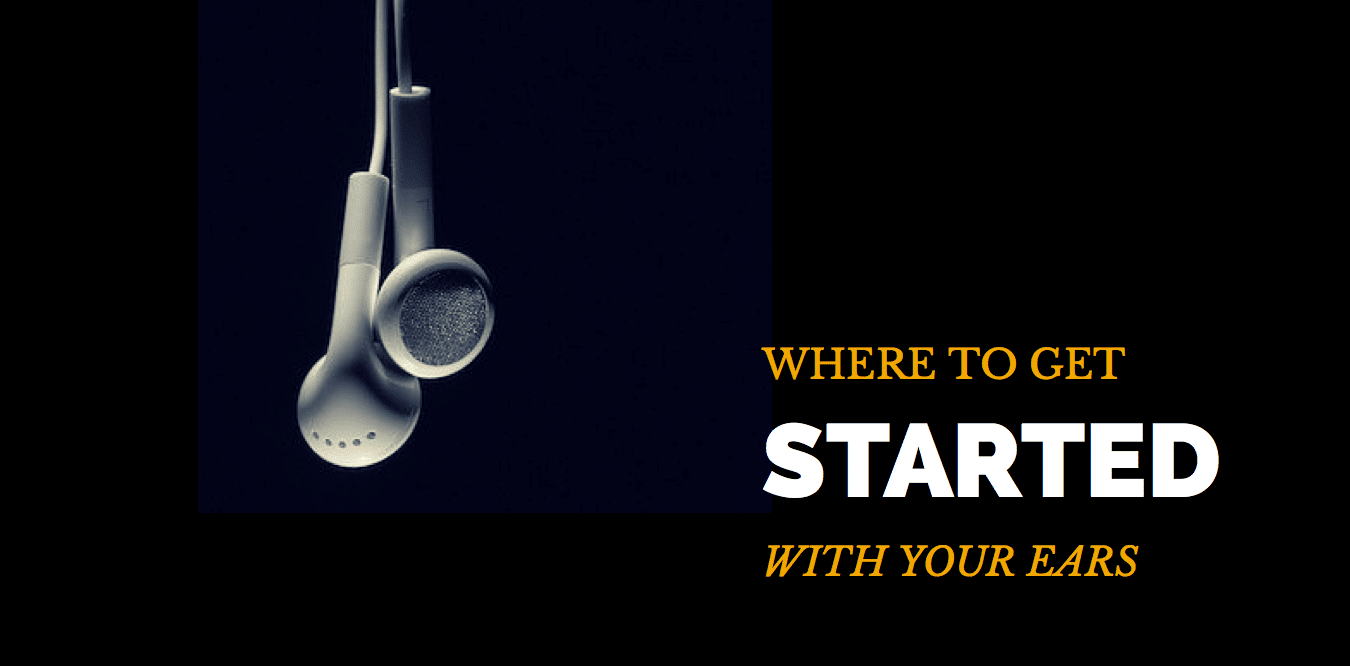What exactly is ear training? You’ve heard musicians talk about it. Your teachers have recommended it. And if you’re a regular here you’ve seen it pop up in more than a few lessons…But I’m guessing the thing that’s made the biggest impression on you was being in the presence of a musician with truly amazing ears.
That gifted player that can pick out the melody to any tune in a matter of seconds. That can simply grab their instrument and solo in any key without a second thought. That can improvise over an unfamiliar chord progression in the blink of an eye.
Somehow these players have trained their ears to become finely tuned sound processing machines.
But what does the term “ear training” mean for the rest of us and how exactly are you going get your ears to that level?
Is it a class that you take?
Is it learning that an interval like the perfect 4th sound like “Here Comes the Bride?”
Or is it something more…
The truth about ear training
If you look at how most schools approach the subject of ear training you’ll find the same few topics:
Interval recognition, sight singing, rhythmic dictation, solfege…
All good information to know and useful for the musician that is going to be reading or even sight reading music.
But is this practical for an improviser?
Is this enough training for someone that wants to get onstage and perform music on the spot? To create solos over different chords, over different keys, and different chord progressions…
Not exactly.
As an improviser you’re not just reading music or dealing with one interval at a time, you’re working with chords, melodies and moving progressions.
And on top of all of this stuff you’ve got to create your own melodies.
The problem with a standard ear training class is that you’re just scratching the surface. You’re thinking about the sound, you’re studying it’s components, but you’re not connecting to it with your instrument as you would in performance.
It’s like talking about food or creating a recipe without actually tasting the ingredients. At the end of the day music, like any other field, is all a theory until you actually put it into practice.
“I tell young players 99 percent of this whole game is about ear training. You have to be able to hear the music and play it on the spot. You don’t get a chance to go home and work on it.”~Roy Hargrove
As a musician intent on creating improvised solos, you need to go a step further so you can be creative when it matters the most – on stage in front of an audience.
Ear training is more than just a class…
Take a look back at the masters of this music.
The majority of them didn’t have jazz schools. They didn’t have improvisation classes and they didn’t have instruction books or fake books.
What they did have however, were records. Without a formal jazz education, the only way to learn how to improvise was directly from the source – the music itself.
Through striving to learn these melodies, solos, and chord progression in the practice room they gained an invaluable benefit, extremely well-trained ears.
And they put these ears to the test on the bandstand. Getting put on the spot by older musicians and often falling on their faces. Survival as a musician meant being able to hear chords, keys, and progressions in a split second – no second chances.
For many musicians today however, this entire process has been replaced with fake books, collections of transcribed solos, and ear training classes in school. And as a result the ear has fallen behind.
School can offer you a lot in terms of musical instruction. However, the thing schools aren’t telling you is that ear training is central to everything you do as a musician.
It’s not a class that can be separated from the other parts of your playing. Every aspect of your musicianship whether it’s music theory, intonation, learning tunes, chord progressions or transcribing goes directly back to your ears.
The ear player vs. the theory player
By now you’ve heard of the difference between the ear player and the theory player.
There’s the player that studied at a school, has mastered theory knowledge and approaches each solo with scales, chords, and memorized lines.
And then there is the intuitive self-taught musician. The player that doesn’t read music, the musicians that just pick up an instrument and use their ear to guide the way.
If you take a close look at yourself you’ll find that you lean one way or the other. But which way is right?
Here’s the kicker: you need to be both.
You need to understand chords and the construction of music, but you also need to be that player that can walk into any musical situation without music and be able to hear what’s going on.
However the truth is, the majority of players today are lacking in the playing by ear department.
School prepares you for the theory part and you can polish your technique in the practice room, but eventually you’ll need to learn how to navigate music with your ears.
And this means working on your ears in the practice room – ear training.
When you play by ear you open up the possibility for improvisation. You aren’t relying on a mental framework or memorized lines, you’re relying on your intuitive creativity.
You’re focusing on the sound within that isn’t predetermined, that’s connected to every part of yourself.
You’re truly in the moment.
Getting started…
So let’s go back to the question of ear training…
For an improviser, ear training is not just a class in school. It’s the one skill that every aspect of your musicianship is built upon.
Essentially ear training means the process of learning to identify intervals, chord qualities, chord tones, chord progressions and the ability to play what you’re hearing. And real ear training happens when you put your ears to the test.
Here’s a simple exercise you can start today in the practice room:
Pick a tune that you know. One that you truly know by heart and can sing right now. It could be Happy Birthday or a nursery rhyme or a pop tune that’s stuck in your ear.
Now start on a pitch and play the melody on your instrument. Don’t think about the note names or the fingerings, just sing it and then play it.
Next, take it through all 12 keys.
Do this every day. This simple exercise will expose the connection between your ears and your instrument. Your job now is to strengthen that connection.
If this is giving you trouble go back and begin slowly with basic intervals and chord qualities. And if you want to improve your ears once and for all, check out our 4 volume course the Ear Training Method!
And finally, in the spirit of the masters of this music, you need to start transcribing. Sit down with your favorite recordings and learn the melodies, chord progressions and solos that you love note by note.
“At this point there aren’t too many situations in which I can’t figure out what is going on. But if I truly can’t figure it out, I love that, because then I can just use my ears. And my ears are pretty quick, so if the harmony changes I can react to that instantaneously—just playing by ear. It’s all playing by ear, it has been from the beginning, and it always will be.”~Kurt Rosenwinkel
That class you took in school is great for an introduction to ear training, but to truly get your ears to the next level you need to dig even deeper.
Remember, there are dozens of crucial skills that you must learn as a musician and each and every one of them depends on your ear!

